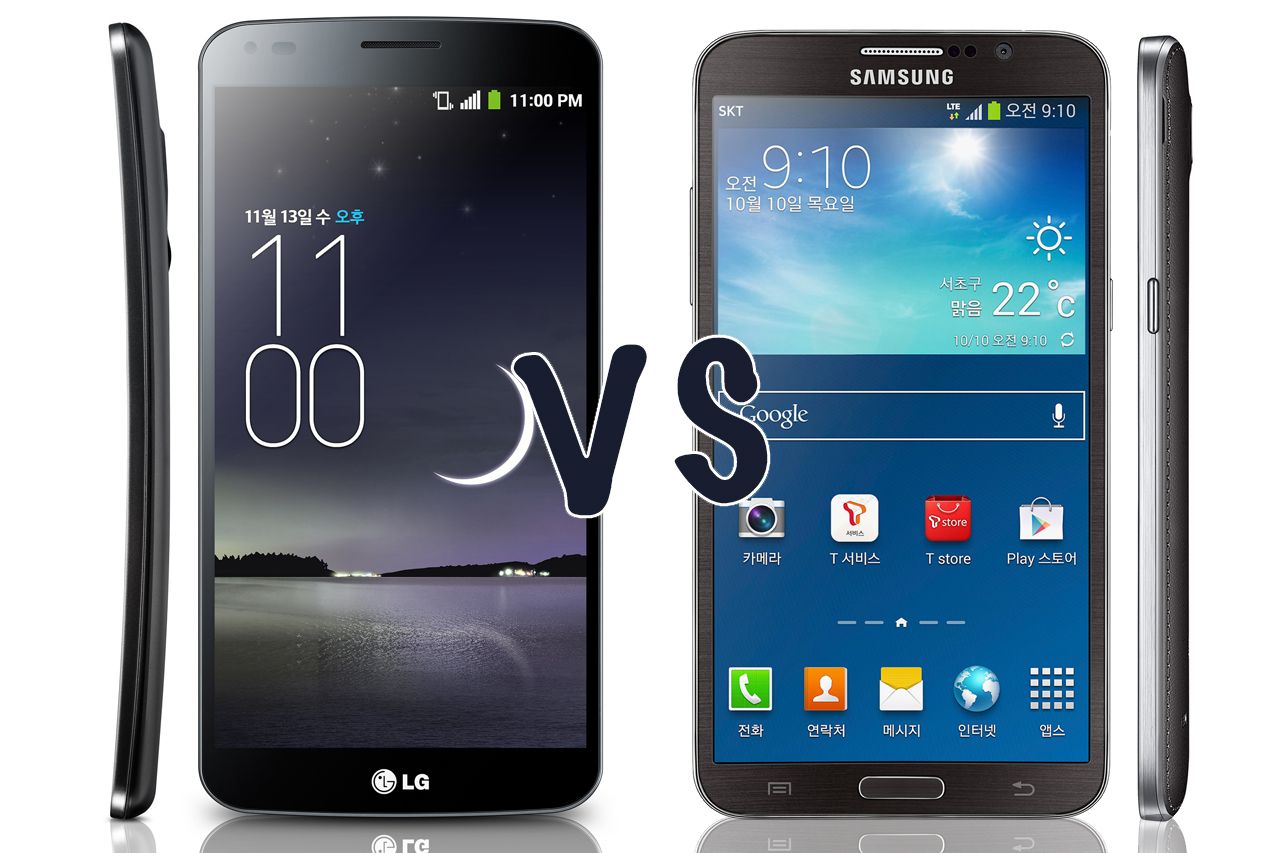What is it with curved OLED screens on TVs and phones? Is it all just a gimmick or is there really something in a rounded screen enhancing viewing?
Both Samsung and LG seem to think so, with their Galaxy Round and G Flex phones, as well as the curved televisions they've both hoiked on to the market in the past year. To the Korean rivals at least, curvy seems to be the way to go.
So what better time, considering LG's handset has just been officially announced, to look at the two oddly shaped smartphones and ask the question, what's the difference?
Size and weight
The LG G Flex is, perhaps surprisingly, larger than the Samsung Galaxy Round, both in screen and physical dimensions. The LG's screen is 6-inches of what the manufacturer calls Curved P-OLED, while the Round has a 5.7-inch Super Flexible AMOLED display.
The Flex measures 160.5 x 81.6 x 7.9 to 8.7mm, with the latter thickness being variable thanks to the nature of the curve. The Round is 151.1 x 79.6 x 7.9mm so smaller all round (no pun intended). The Samsung device is also a touch lighter, weighing 154g in preference to the LG's 177g.
Resolution
Bar the shape itself, which we will come to, the screens do dramatically differ in screen resolution. The Samsung Galaxy Round has a 1920 x 1080 Full HD display, with 386 pixels per inch. The G Flex has a 1280 x 720 HD display, which comes out as a fraction under 245ppi.
That basically means that although the Samsung display is slightly smaller, it has a higher resolution and will therefore look much sharper than the LG P-OLED screen. Which also has an amusing name, to be honest.
Read: LG G Flex curved smartphone officially announced, packs 6-inch display and 'self-healing' back
Processor
Unlike with the screen, in terms of processing power both devices are able to duke it out on a level playing field. They each feature a 2.3GHz quad-core Qualcomm Snapdragon 800 chipset, also featuring Adreno 300 graphics. However, the Samsung packs in 3GB of RAM in favour of the 2GB found in the bowels of the LG. That could make a difference in the speed, most notably during multitasking.
Camera
Bar manufacturer add-ons and software, both phones have similar camera specifications. They each feature a rear-mounted 13-megapixel camera, with a 2-megapixel front-facing snapper.
Read: Samsung officially announces Galaxy Round, featuring curved OLED display
Battery
The LG wins this particular bout, but does have a larger display to drive. The G Flex has a 3,500mAh battery, while the Galaxy Round's is 2,800mAh.
And now that screen
Yep, we couldn't hold it off any longer. The biggest and most obvious difference between the devices comes in the shape itself. While the Samsung Galaxy Round features a curve across the vertical access - the portrait mode - which we would imagine would feel right ergonomically, LG has opted for a horizontal curve, more closely reflecting its curved OLED TV.
LG claims that it is this kind-of curve that will give a more reassuring grip and will ensure the phone fits more comfortably in a back pocket - although a 6-inch device in a back pocket is a worrying thing in itself. We're not so sure about those excuses, at least until we get to handle on for ourselves, but the third reason does make some sense.
The company says that the "curvature arc" offers an IMAX-like experience when watching video in landscape mode. It is a "more comfortable viewing angle for watching videos or playing games," it adds.
Conclusion
The LG G Flex is perhaps the boldest of the two devices, in that it features a stranger form factor than its rival. The Samsung certainly wins out in some of the tech on board, with higher resolution, albeit smaller, screen but we suspect that it will be the LG device that will raise more eyebrows.

